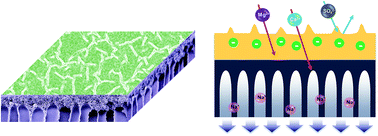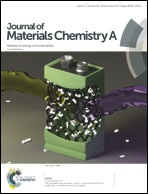Graphene oxide-embedded polyamide nanofiltration membranes for selective ion separation†
Abstract
Herein, a graphene oxide (GO)-modified piperazine (PIP) nanofiltration (NF) membrane was successfully fabricated via in situ interfacial polymerization of PIP-GO and trimesoyl chloride on a porous substrate, in which GO induced a wrinkled membrane surface with improved roughness and hydrophilicity and reduced electronegativity. Ion separation tests show that GO increases the water flux of the membranes significantly by 10–15 LMH for all the studied salt solutions. Furthermore, GO can selectively increase the retention of CaCl2 and MgCl2, but slightly decrease the rejection of MgSO4, NaCl, and KCl; this indicates an improvement in the separation performance of the PIP-GO membrane between divalent and monovalent cations with a common counter ion, Cl−. The enhanced water permeation of the PIP-GO membrane can be ascribed to its increased surface area, hydrophilicity, and ultrafast water transport between GO nanosheets. The GO-promoted selective ion separation is the result of an attenuated electrostatic attraction between Ca2+, Mg2+, and the membrane as well as the water flow-accelerated transport of Na+ and K+. Therefore, GO-modified NF membranes exhibit great potential for applications in the areas of water purification and separation.



 Please wait while we load your content...
Please wait while we load your content...